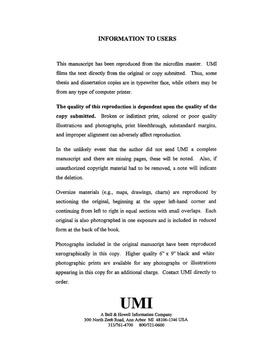| dc.contributor.advisor | Langenbach, Michael, | en_US |
| dc.contributor.author | Pettersen, Clifford Andrew. | en_US |
| dc.date.accessioned | 2013-08-16T12:30:28Z | |
| dc.date.available | 2013-08-16T12:30:28Z | |
| dc.date.issued | 1999 | en_US |
| dc.identifier.uri | https://hdl.handle.net/11244/5779 | |
| dc.description.abstract | Early beginning teacher induction programs were predominately based on a deficit model while later programs followed a more developmental model. Within these models, various program designs have been employed, with all focusing to some degree on assistance to and evaluation of the beginning teacher and included school, district, and higher education educators in different support roles. In Oklahoma, the statewide induction program has been in place for nearly 20 years, with only non-substantive changes (i.e., terminology changes) taking place since its inception. As a consequence, the Oklahoma Residency Program still follows a deficit model. | en_US |
| dc.description.abstract | Data for the study were collected from surveys and interviews of a random sample of administrators, mentor teachers, resident teachers, and higher education representatives who participated in the residency program during the academic year 1997--1998. Parametric and non-parametric statistics were used to analyze these data. | en_US |
| dc.description.abstract | The purpose of this study was twofold. The first was to investigate the value of the higher education representative's contribution on Oklahoma residency committees based on the perceptions of the resident teacher and residency committee members---school administrators, mentor teachers, and higher education representatives. This contribution focused on both assistance and evaluation in five areas: (a) classroom management, (b) human relations, (c) professionalism, (d) teaching and assessing, and (e) professional development. The second was to examine other possible roles for higher education and their possible benefit to the Oklahoma residency program, again based on the perceptions of the four groups. This examination focused on 13 roles that included the current one-on-one role and 12 other roles selected from the literature on induction. | en_US |
| dc.description.abstract | The results indicated conflicting perceptions across the groups regarding the value of the higher education representative's contribution and other possible roles for higher education. In particular, the higher education representatives perceived their contribution greater than did the other three groups. In addition, the present role of higher education was not perceived as the most appropriate for higher education. Further, there were some indications of non-compliance with mandated program requirements, as well as a general lack of shared understanding of program components among residency program participants. | en_US |
| dc.format.extent | ix, 146 leaves ; | en_US |
| dc.subject | Teachers Training of Oklahoma. | en_US |
| dc.subject | Education, Administration. | en_US |
| dc.subject | Education, Higher. | en_US |
| dc.title | Teacher induction : | en_US |
| dc.type | Thesis | en_US |
| dc.thesis.degree | Ph.D. | en_US |
| dc.thesis.degreeDiscipline | Department of Educational Leadership and Policy Studies | en_US |
| dc.note | Adviser: Michael Langenbach. | en_US |
| dc.note | Source: Dissertation Abstracts International, Volume: 60-04, Section: A, page: 0964. | en_US |
| ou.identifier | (UMI)AAI9925592 | en_US |
| ou.group | Jeannine Rainbolt College of Education::Department of Educational Leadership and Policy Studies | |
